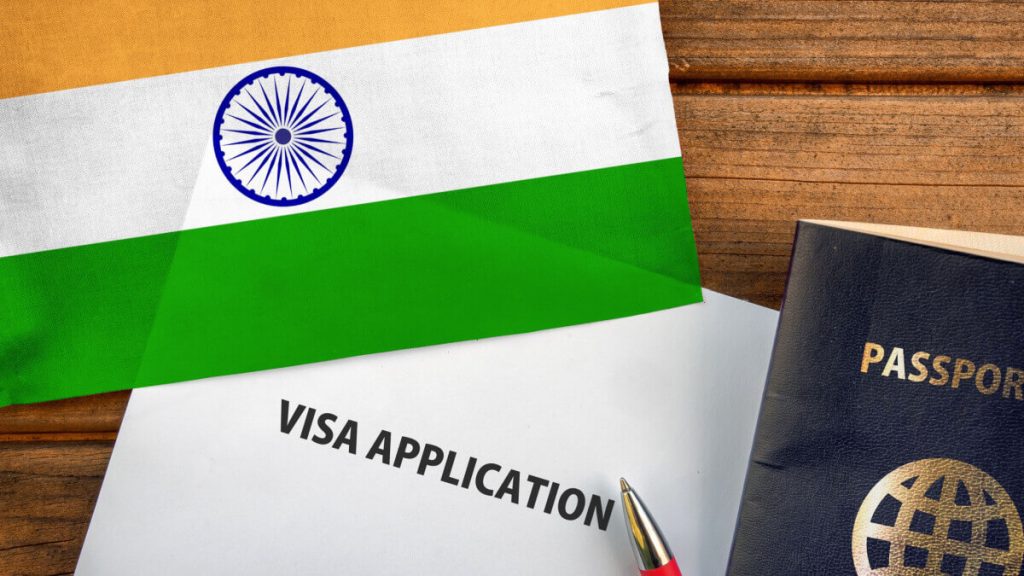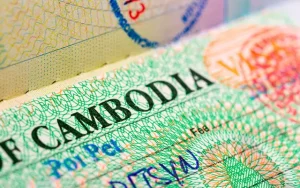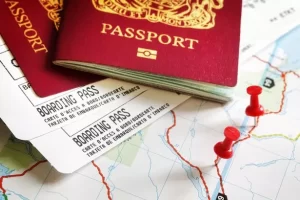
Introduction
Traveling to India is an exciting adventure, filled with rich history, vibrant culture, and diverse landscapes. But, before you embark on your journey, one of the most important things you need is a valid visa. If you’re planning to visit India, understanding the requirements related to airports and ports of exit is crucial. Where can you enter and leave the country? What are the guidelines? In this article, we’ll guide you through everything you need to know about Indian visa airports and ports of exit, ensuring your travel experience is smooth from start to finish. INDIAN VISA AIRPORTS AND PORTS OF EXIT
What is an Indian Visa?
An Indian visa is an official document that permits foreign nationals to enter, stay, and travel within India for a specified period. Depending on the type of visa you hold, it might have different requirements concerning entry and exit points. Whether you’re traveling for tourism, business, medical purposes, or other reasons, knowing which airports and ports are valid for entry and exit can help avoid unnecessary hassles.
Importance of Airports and Ports for Visa Holders
Airports and ports are not just places to catch flights or ships—they are gateways that ensure you’re complying with Indian immigration laws. The Government of India has designated specific airports and seaports where travelers with visas can enter and exit the country. Failure to use these authorized points can lead to complications, including fines or refusal of exit.
Indian Visa Entry and Exit Guidelines
For travelers holding an Indian visa, whether it’s an eVisa, tourist visa, or any other category, entry and exit must occur at specific airports and ports. Not all airports in India are permitted for visa holders, so it’s essential to know which ones are approved by the government. INDIAN VISA FOR AUSTRALIAN CITIZENS
Top Indian Airports for International Arrivals
India has several major airports where foreign nationals with visas can enter the country. Some of the busiest and most convenient airports include:
- Indira Gandhi International Airport (Delhi) – The primary gateway for international visitors.
- Chhatrapati Shivaji Maharaj International Airport (Mumbai) – A key hub for western India.
- Kempegowda International Airport (Bangalore) – A rapidly growing airport in southern India.
- Netaji Subhas Chandra Bose International Airport (Kolkata) – Ideal for visitors heading to eastern India.
- Cochin International Airport (Kochi) – A major airport in Kerala, perfect for tourists visiting the southern coastline.
- Chennai International Airport (Chennai) – A key gateway to southern India.
Popular Ports of Exit in India
India also has designated seaports for travelers exiting the country. Some of the most popular ports for international departures include:
- Mumbai Port – One of the largest and busiest ports in India.
- Chennai Port – Serving as a major point of exit for travelers heading to Southeast Asia.
- Cochin Port – Located in Kerala, ideal for travelers leaving via the Indian Ocean routes.
- Marmagoa Port (Goa) – Popular among cruise travelers.
These ports play a critical role for travelers who prefer sea routes over air travel, particularly those on cruise ships or cargo vessels.
Visa Requirements at Indian Airports
At the airport, visa holders must ensure they have all necessary documents ready. Apart from your passport and visa, you might be required to show proof of onward travel, sufficient funds, and accommodation details. Immigration officers can ask for additional documentation, especially if you’re on a long-term visa.
Essential Documents to Carry at Airports
Before heading to the airport, ensure you have the following:
- Valid passport with at least six months of validity remaining.
- Printed visa (if applicable) or a digital copy of your eVisa confirmation.
- Return or onward flight ticket to confirm your exit from India.
- Hotel booking details or an address where you’ll be staying.
Being prepared with these documents will help make the immigration process smoother.
Exit Requirements for Indian Visa Holders
When exiting India, visa holders must adhere to the guidelines provided by immigration authorities. Ensure your visa has not expired, as overstaying can lead to penalties or a future ban on re-entering the country. Most travelers leave through the same designated airports they entered, but in some cases, you might be allowed to exit through a different airport, as long as it’s an approved exit point.
Can You Leave India from Any Airport?
No, not every airport in India is authorized for international exit. Only specific airports approved by the Indian government can be used for this purpose. Using an unauthorized exit point can result in significant delays, and you may even be denied exit. Therefore, always check the list of authorized exit airports before making your travel plans.
Indian eVisa and Airports
The eVisa is a popular option for many travelers, but it comes with specific restrictions. Travelers holding an Indian eVisa can only enter and exit the country through designated airports and seaports. Currently, there are 28 designated airports and 5 seaports approved for eVisa holders. Make sure you’re using the correct airport to avoid any legal issues.
How to Choose the Right Airport for Your Exit
When planning your exit, consider the following factors:
- Proximity to your final destination – Choose the airport closest to your last stop in India.
- Airport facilities – Some airports are more modern and efficient, offering better amenities.
- Flight availability – Ensure the airport has flights to your next destination.
- Traffic and accessibility – Major airports like Delhi and Mumbai may experience heavy traffic, so plan accordingly.
Tips for a Smooth Exit Process
Exiting India can be as straightforward as entering if you’re well-prepared. Here are some tips to ensure a smooth process:
- Arrive Early – For international flights, it’s advisable to arrive at least three hours before departure.
- Have All Documents Ready – Immigration can ask for your visa, passport, and flight details at any time.
- Check Visa Validity – Ensure your visa is still valid on the day of departure.
- Avoid Last-Minute Changes – If possible, don’t make last-minute changes to your exit airport.
Common Mistakes to Avoid at Airports and Ports
- Using Unauthorized Entry/Exit Points – Always use the designated airports or ports to avoid complications.
- Forgetting Essential Documents – Without the proper documentation, your exit might be delayed.
- Overstaying the Visa – Overstaying can lead to hefty fines or a ban from entering India in the future.
Conclusion
Traveling to and from India requires careful planning, especially when it comes to the airports and ports of entry and exit. Whether you’re using an eVisa or a traditional visa, always ensure that you are following the guidelines set by Indian authorities. By choosing the right airports and preparing adequately, your travel experience will be stress-free, allowing you to focus on enjoying your trip. Remember, preparation is key, and being informed can make all the difference.
FAQs
- Can I use any airport to leave India with an eVisa?
- No, eVisa holders must use one of the 28 designated airports or 5 seaports for exit.
- What happens if I overstay my Indian visa?
- Overstaying your visa can result in fines, legal penalties, and possibly a ban from re-entering India.
- Can I enter and exit from different airports in India?
- Yes, as long as both airports are on the list of authorized entry and exit points.
- What documents are required at Indian airports for visa holders?
- You’ll need your passport, visa, return flight ticket, and accommodation details.
- Are there any restrictions on leaving India through seaports?
- Yes, only certain seaports are authorized for international departures, so check beforehand.





